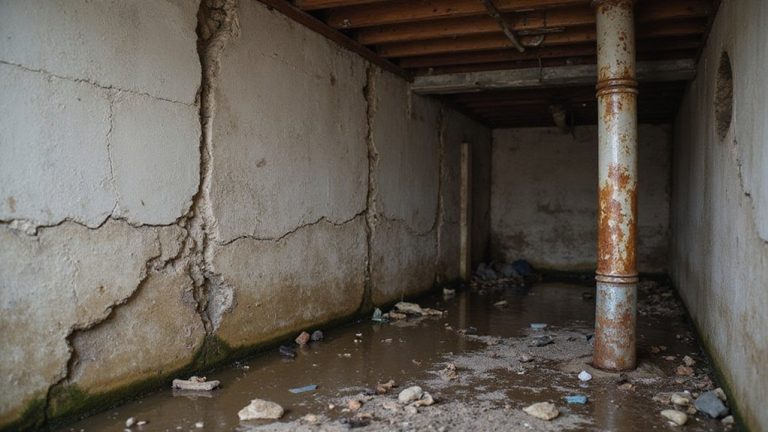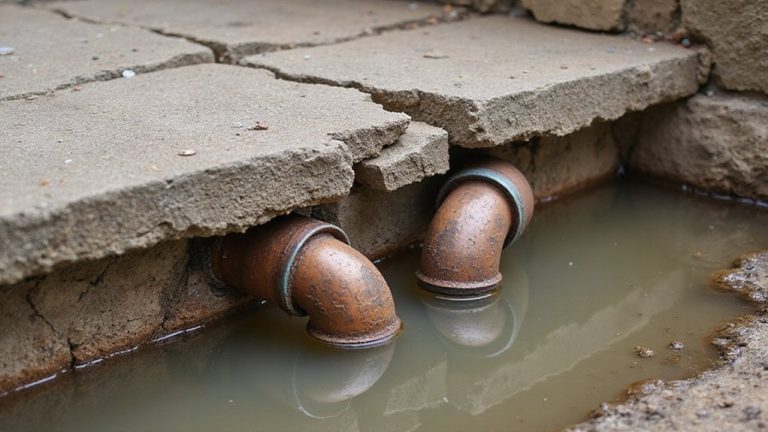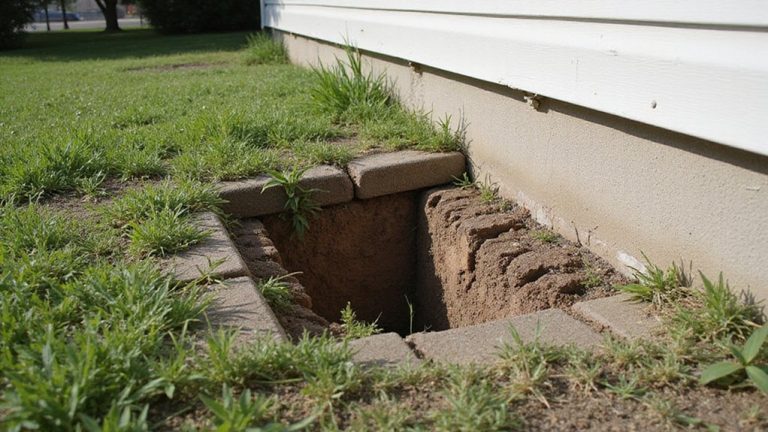Extreme temperature fluctuations can wreak havoc on your home’s foundation, leading to costly cracks and structural damage. Fortunately, you can take proactive steps to safeguard your investment. Proper insulation, regular inspections, and addressing drainage and soil issues are essential. By understanding the impact of temperature on your foundation and employing strategic preventive measures, you can guarantee the long-term stability and integrity of your home’s structural support. Stay tuned to uncover the key strategies that will help you protect your foundation from the detrimental effects of extreme temperatures.
Understanding the Impact of Extreme Temperatures on Foundations
As a homeowner, you may not realize the significant impact that extreme temperatures can have on your home’s foundation. Thermal expansion dynamics cause the soil beneath your foundation to expand and contract as temperatures fluctuate. This can lead to uneven settlement, cracks, and structural damage over time. Additionally, soil compaction effects from freezing and thawing cycles can destabilize the ground, further compromising your foundation’s integrity. Understanding these environmental factors is essential in developing an effective strategy to prevent foundation cracks and maintain the long-term stability of your home.
Proper Insulation for Temperature Regulation
Proper insulation is indispensable in regulating your home’s temperature and preventing foundation cracks. Employ proper ventilation techniques to maintain airflow and control humidity levels.
Opt for temperature-resistant materials like rigid foam or fiberglass insulation to safeguard your home from extreme temperature swings. These solutions can effectively minimize thermal expansion and contraction, shielding your foundation from the damaging effects of dramatic temperature changes. Checking for signs of basement and floor sagging can alert homeowners to potential foundation issues.
With the right insulation in place, you’ll enjoy a more comfortable living environment and a sturdy, crack-free foundation that stands the test of time.
Regular Foundation Inspections and Maintenance
Maintaining a healthy foundation is critical, and regular inspections can help you catch problems early before they become costly repairs. Seasonal foundation monitoring is key – inspect it inside and out each spring and fall.
Check for cracks, settling, or water pooling around the base. Address any issues promptly, like sealing cracks or adjusting the grading to direct water away. Consistent maintenance keeps your home’s foundation in top shape and prevents major problems down the line. It’s a small investment that can save you a lot of headaches and money in the long run.
Addressing Drainage and Soil Issues
If your home’s foundation is showing signs of distress, you’ll need to address any drainage and soil issues around the base. Proper grading adjustments can redirect water away from the foundation, preventing moisture buildup. Guarantee the soil slopes gently away from the house, with a minimum 6-inch drop in the first 10 feet. This allows rainwater and snowmelt to flow freely.
Additionally, install downspout extensions or French drains to channel excess moisture. Addressing these drainage and moisture control factors can considerably reduce the risk of foundation cracks, safeguarding your home’s structural integrity.
The Use of Expansive Soil Treatments
While addressing drainage and soil issues is crucial, you may also need to ponder the use of expansive soil treatments. Soil moisture monitoring and soil compaction analysis can help identify problematic expansive soils that need special attention.
Expansive soils swell when wet and shrink when dry, causing foundation cracks. Professional soil treatments, like adding lime or gypsum, can stabilize these soils. This may involve excavating and replacing soil or using specialized techniques. Though an investment, proactive expansive soil treatments can prevent costly foundation repairs down the line, giving you greater peace of mind.
Reinforcing the Foundation With Structural Supports
Should your foundation already show signs of cracking, you’ll likely need to reinforce it with structural supports. Compressive strength testing can determine the load bearing capacity of your foundation, guiding the appropriate reinforcement methods.
Steel beams, concrete piers, or helical piers can provide the extra support needed to stabilize your home. These structural elements distribute weight more evenly, preventing further cracking. While the process may seem arduous, reinforcing your foundation is essential for preserving your home’s integrity, especially in extreme temperatures that can exacerbate foundation issues.
A professional assessment will guarantee the right solution for your needs.
Homeowner Vigilance and Proactive Measures
Though foundation repairs can be stressful, proactively monitoring your home’s foundation is essential to prevent further damage. Regular, careful monitoring can help you identify potential issues before they become major problems.
Watch for cracks, settling, or other signs of foundation distress, and address them promptly through preventative repairs. This vigilance can save you time, money, and headaches down the road. Stay attuned to your home’s foundation, and don’t hesitate to consult a professional if you have any concerns. With a proactive approach, you can protect your home’s structural integrity.
Frequently Asked Questions
What if My Foundation Has Already Cracked?
If your foundation has already cracked, you should hire a professional inspector to assess the damage. Consider foundation reinforcement to stabilize and strengthen the foundation, ensuring your home’s structural integrity.
Can I Prevent Cracks by Adding More Insulation?
Adding more insulation can help, but you’ll also need to ponder thermal mass and moisture management strategies to genuinely avert foundation cracks. This comprehensive approach will provide your home the safeguard it requires.
How Often Should I Have My Foundation Inspected?
You should have your foundation inspected regularly by a professional to look for any signs of deterioration. Catching issues early can help you avoid costly repairs and guarantee your home’s safety.
Will Chemical Treatments Stop My Foundation From Moving?
Chemical treatments can help stabilize your foundation, but they won’t stop it from moving entirely. While they may reduce shifting, regular inspections and other foundation stabilization methods will be needed to prevent cracks in extreme temperatures.
Can I DIY Foundation Repairs to Save Money?
You can DIY foundation leveling, but it’s risky. Get a professional foundation assessment first to guarantee the repairs are done safely and productively. Skipping this step could lead to more costly issues down the road.



